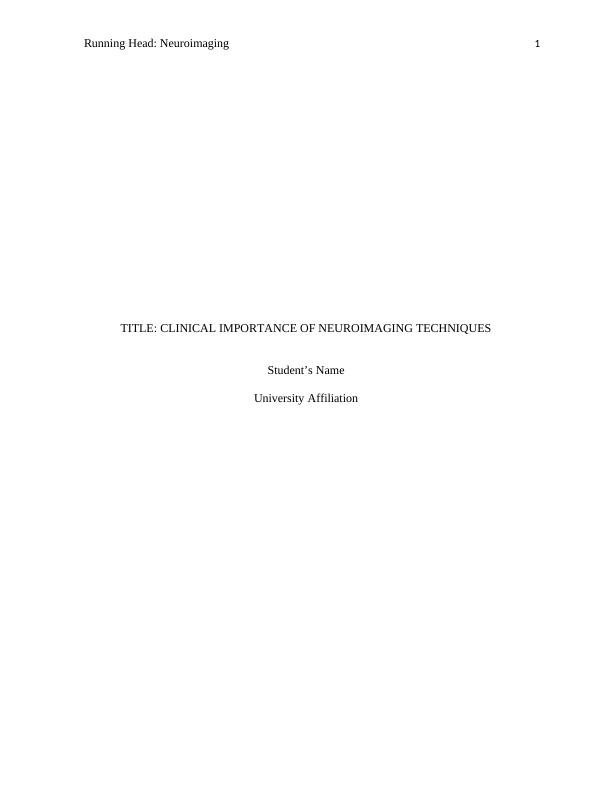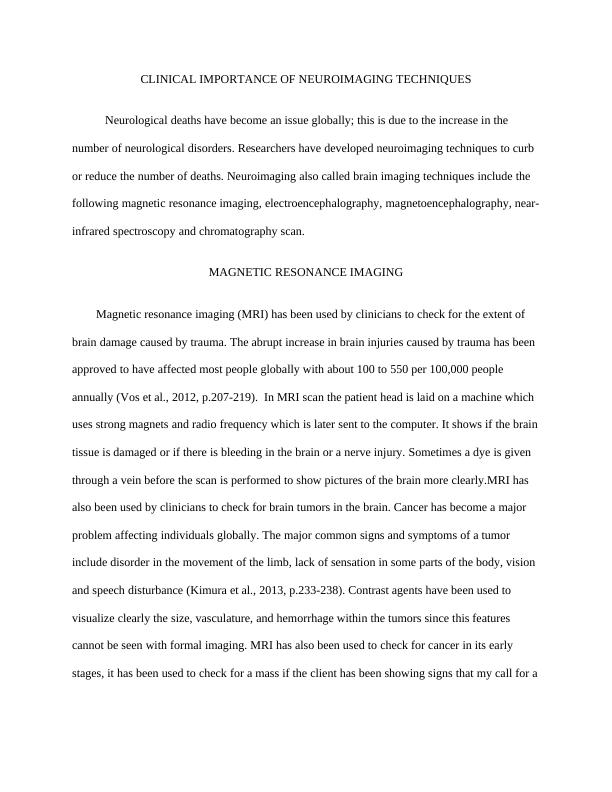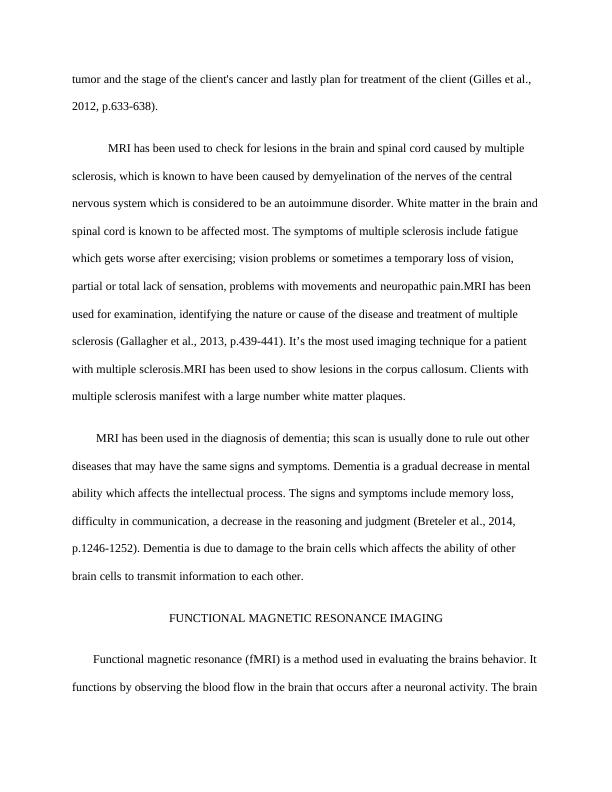Ask a question from expert
Clinical Importance of Neuroimaging Techniques
9 Pages2186 Words193 Views
Added on 2020-03-23
Clinical Importance of Neuroimaging Techniques
Added on 2020-03-23
BookmarkShareRelated Documents
End of preview
Want to access all the pages? Upload your documents or become a member.
Magnetic Resonance Imaging Protocol for Epilepsy
|10
|2752
|193
Magnetic Resonance Imaging Versus Ultrasound in Fetal Neuroimaging
|12
|3656
|287
Understanding Multiple Sclerosis: Causes, Symptoms, and Treatment of the Nervous System Disease
|13
|3461
|105
PET Review in Respect to Pediatric Neuroblastoma
|8
|1916
|61
Prostate MRI
|14
|3285
|359
Scanning Techniques –MRI
|1
|809
|143


